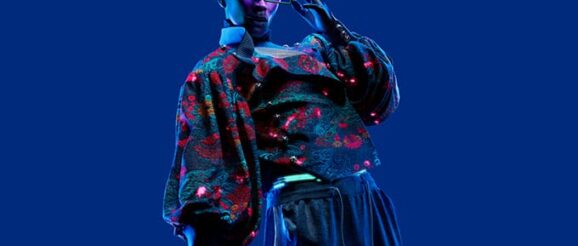Driving digital innovation in fashion: Adriana Hoppenbrouwer-Pereira

Launching a disruptor Founded in 2018, The Fabricant embarked on a clear mission: to be the foremost leader in the digital fashion space, dressing 100 million people by 2025. Adriana Hoppenbrouwer, Co-Founder of Fabricant, sheds light on the challenges and strategies behind disrupting a nascent industry. “Being a disrupter in a new industry is like building a plane and an airport simultaneously while attempting to land. It requires resilience, stubbornness, and openness,” says Adriana. This vivid analogy captures the complexity of establishing a new product and impacting an entire sector. Creating a disruptor product requires more than solving existing problems; it demands research and visionary thinking. Adriana emphasizes, “It’s about building a product that may not necessarily exist and crafting a solution that opens up a range of possibilities.” The importance of a steadfast vision is paramount. Adriana notes, “Our vision of leading the digital-only fashion frontier and reshaping the fashion landscape has never changed—although the ‘how’ has. Building confidence in that vision is pivotal to becoming a disruptor in the market.” Once the vision and strategy are in place, Adriana underscores the significance of focusing on the fundamentals of product management—knowing the user and iterating based on customer feedback. She adds, “It’s important to iterate the product based on the feedback that you receive from customers. This iterative process has been fundamental to our journey.” Leading through product growth “We embarked on this journey as a mission-driven company with a burning desire to reshape the industry,” Adriana says, reflecting on her experiences as a leader within the product. “In the early days, our team comprised true missionaries—individuals deeply passionate about our cause, the first 5-10 people who were driven by a genuine care for what we aimed to achieve.” “As we expanded to 20 employees, the dynamic shifted to include mercenaries—those proficient at their jobs but lacking the same loyalty for the cause. Effective communication and alignment were more crucial than ever as we grew from a small family to a tribe” she emphasizes. To aid this change in dynamics, the implementation of bi-weekly sprints with dedicated product owners and scrum masters was key. “This alignment not only established a cadence but also culminated in a demo day, a platform to showcase the collective accomplishments of every team member, regardless of their specific function. Since implementing this, it has injected a momentum and speed of delivery that we previously didn’t have.” “At the core of our growth has always been collaboration. We prioritize culture fit, skill set, and values when expanding our team,” Adriana shares. “Regrettably, past attempts at growth stumbled when we couldn’t find individuals who aligned with our values, even if they possessed the necessary skills.” She concludes by emphasizing the three pillars that continue to define their team-building philosophy: “Impact, curiosity, and collaboration—these are the keys we consistently focus on when assembling a team, ensuring that each member contributes not only skills but also shares our passion for making a meaningful difference in the industry.” Embracing the world of digital tools “In this ever-evolving digital landscape, we foster a culture of curiosity within our team, urging them to explore new tools and experiment with different approaches,” Adriana emphasises, commenting on the rise of AI-based tools. “We seize every opportunity to integrate innovative AI methods into our work, acknowledging their transformative potential.” “An engaging weekly initiative we’ve also introduced is the ‘product tear-down,’” she continues. “Each team member is encouraged to spotlight a product they find exciting, delving into what makes it unique. For instance, our front-end engineer recently brought Spotify to the table. This initiative prompts discussions about components that might not typically be part of our product considerations, providing a valuable platform for experimentation, collaboration, and shared learning.” “Through these ‘tear-down’ sessions, we learn from each other’s perspectives and gain insights from examining other products in the market. It’s a fantastic opportunity for our team to broaden their horizons, explore new ideas, and foster a culture of continuous learning and innovation,” Adriana concludes.
